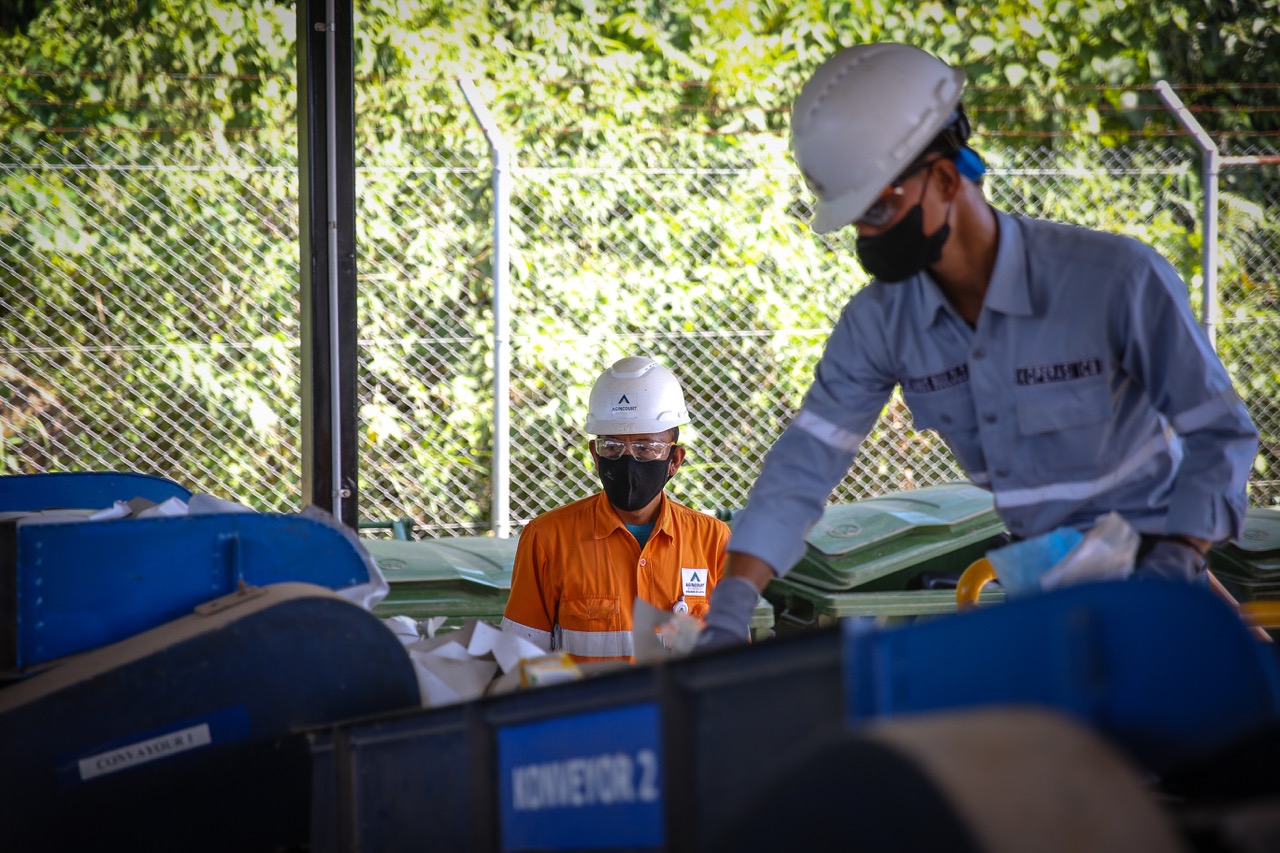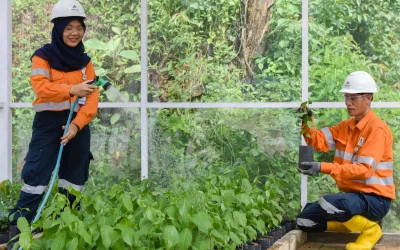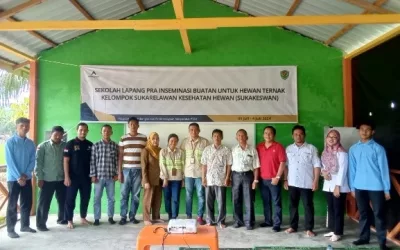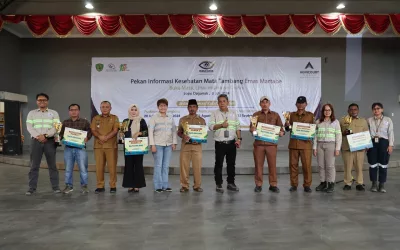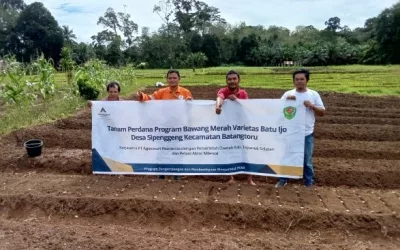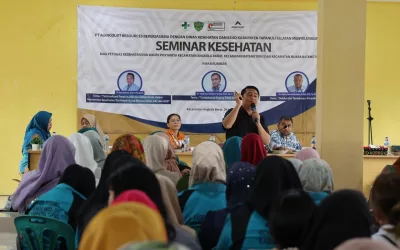Indonesia is a country furnished with rich natural resources and fertile soils that support a variety of cash crops. The sun shines throughout the year as its precipitation allows the archipelago to have more kinds of trees. Many of these natural resources are found on the surface and are easily visible, such as flora and fauna, water, volcanoes, rivers that bring rich minerals for vegetables, and the sun that shines all year round. Wealth found beneath the surface such as oil, gas, geothermal, minerals, and metals must be explored and managed with appropriate, good, and responsible technology and management.
Indonesia has secured a place in the top 10 countries producing gold worldwide. In 2021, the country produced 66 tons of gold, according to the United States Geological Survey (USGS) data. Indonesia also holds 2600 metric tons of gold reserves, ranking sixth globally for the largest gold reserves. The five countries ahead of Indonesia in terms of gold reserves include Australia, Russia, South Africa, the United States, and Peru.
In 2018, Indonesia’s gold production peaked at 135.29 tons, but it has decreased since then. As of 2022, Indonesia’s gold production has reached 70 tons, accounting for 4% of the world’s total gold production.
Martabe Gold Mine in the South Tapanuli district, Sumatra, is owned and managed by PT Agincourt Resources, a subsidiary of Astra International – a group of companies that prioritize the concept of Sustainable Development Goals (SDGs). In line with this, Astra International has launched Astra 2030 Sustainability Aspirations, a roadmap towards becoming a sustainable company.
Technology For Sustainability
At the end of 2020, the Martabe gold mine had a total gold reserve of 135 tons. The mine has been in operation since 2012 and covers an area of approximately 130 thousand hectares under the current Contract of Work. The gold reserves at Martabe are characterized by high levels of sulfidation deposits. The processing method used is Carbon-in-Leach (CIL), which is slightly more expensive than the leaching method but has a higher recovery rate. With a processing plant capacity of up to 6 million tons of ore per year, the Martabe gold mine can produce up to 10 tons of gold annually. The mine has a remaining life of 14 years.
As a company that adheres to the concept of good mining practice, PTAR chooses a more expensive method because it is more efficient in the gold extraction process and also more environmentally friendly. Good mining practice is a mining activity that adheres to the rules, has good planning before the exploration period begins, applies appropriate technology based on effectiveness and efficiency, implements conservation of minerals, controls and maintains environmental functions, ensures work safety, accommodates the wishes of and community participation, generate added value, and create sustainable development. Gold mining requires a process of exploration, extraction, and handling of mining residues must be done responsibly to protect the community and the environment.
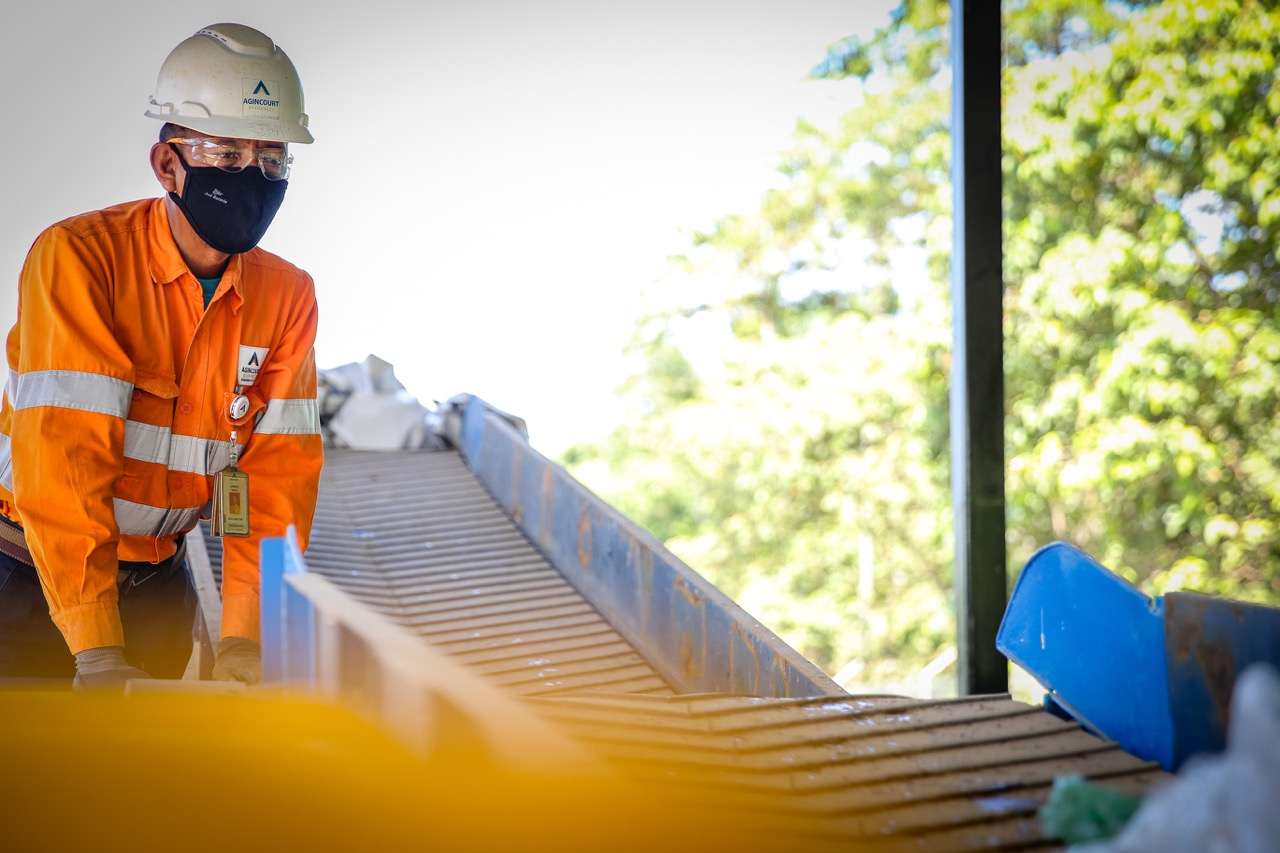
Read Also: Safe Technology for Gold Processing
The Martabe gold mine has adopted cyanide utilized to extract the gold. Cyanide is easier to decompose in nature. Event though the use of cyanide requires more advanced technology and handling, as well as more expensive funds, PTAR has chosen to use this method for gold extraction due to its efficiency and environmental friendliness.
Cyanide is a superior choice for gold extraction as it offers a more sustainable, environmentally friendly, and efficient solution than mercury. The gold extraction process using cyanide can yield up to 91% gold, whereas mercury can only extract up to 40%. The gold-containing rock grains are crushed by a machine and then mixed with water and cyanide in the cyanidation process. After this process, the gold is separated and removed to a special place containing activated carbon, where it is absorbed.
The carbon is later burned, leaving behind the gold. According to research conducted by IPB students Nuril Hidayati, Titi Juhaeti, and Fauzia Syarif, cyanide is a common compound found in various industrial wastes, and it is usually present as free cyanide or reacts to form metal cyanide complexes. Cyanide can be very stable in the subsurface or in the absence of light, but it can rapidly decompose in surface water or soil surfaces exposed to sunlight, releasing harmless free cyanide. [1]
Read Also: Agincourt Resources and IPB Collaborate on Biodiversity Conservation Strategy
Several research studies have shown that it is possible to use specific plants for cyanide remediation or neutralizing cyanide in aquatic and land environments. Cyanogenic plants, which produce and synthesize cyanogenic glycosides that break down cyanide are particularly effective in phytoremediation. Because these plants naturally contain cyanide, they have a greater ability to break down the chemical. Phytoremediation studies used Urtica dioica (nettle) and Sinapis arvensis (a type of wild mustard) in contaminated basins by harvesting the tops after two vegetative periods to remove the contaminants (research by Gerth 2000). [2]
Phytoremediation is the use of green plants to remove harmful contaminants from the environment. Environmental safety standards are also applied to the production of wastewater. Thus, the cyanide method is supported by more advanced waste & water management technology, and handling the remaining processed products in the form of water and soil, and rock in the PTAR mining area becomes more environmentally friendly..
Responsible Mining
PTAR understands mining activities indirectly have an impact on the environment. It is on this basis that PTAR views the importance of handling residual processed products and caring for the environment outside the mining area to achieve sustainability to meet the SDGs as proclaimed by the government and the parent company. Therefore, PTAR works regularly to prevent and monitor waste pollution in the environment. In 2021, the company allocates up to USD 370,595 for waste management.
PTAR has modern and qualified facilities equipped with the latest technology to manage waste materials. At the Tailings Storage Facility (TSF) dam, waste material management involves handling acid mine drainage and soil/rock waste (barren rock).
The amount of sulfide minerals in 1,910,819 tons of processed residue collected in 2021 can release acids into the atmosphere if it is exposed to the air. The combination of waste materials and landfills poses several risks, including acid-producing rock materials that can contaminate water sources and cause soil structure failures around unattended or poorly maintained dams.
If the rest of the processed products are not managed and left unchecked, they will produce leachate which is acidic and contains metal solutions after being exposed to rainwater, this leachate is also known as Acid Mine Drainage (AMD). Leachate is a toxic liquid resulting from the extraction of dissolved materials with a high pollutant content, resulting from exposure to rainwater.
Once a month the PTAR Geology Team conducts a sampling process by taking samples to monitor quality so that the plan for handling the remaining processed products is consistent with what is happening in the field. The TSF dam in the Martabe mine area is not just a dam, but a dam built using Engineering Fill technology or layer engineering, namely a layer-by-layer compaction technique using a vibro compactor.
All aspects of the dam are tested to meet predetermined specifications such as water replacement density, particle size distribution, and Dutch cone penetration to the Atterberg limit. Atterberg limit is the consistency index or water content limit, namely shrinkage limit, plastic limit, and liquid limit. Plastic Limit (PL) is the lowest water content at which the soil starts to become plastic. The Dutch cone penetration test is a method used to determine geotechnically engineered soil properties and describe soil stratigraphy.
The company, which recruits 70% of its employees from local residents, has a satisfactory track record since 2013 in terms of environmental management. This gold mine won the Utama award (silver) for the category of Contract of Work holder in the field of Mining Safety Management from the Directorate General of Minerals and Coal, Ministry of Energy and Mineral Resources in 2013. After that, it was awarded a Blue PROPER rating from the Ministry of Environment. and Forestry in 2014-2015 to 2016 for the category of environmental management. The main award (silver) was also obtained from the Director General of Mineral and Coal of the Ministry of Energy and Mineral Resources in the category of Safety and Environmental Management sequentially, from 2013 to 2017. PTAR also received the Best Award at the 2019 Indonesia Sustainable Business Award or the Sustainable Business Award in Indonesia initiated by Global Initiatives and PwC Singapore and Indonesia in Jakarta on 21 February 2020. The Best Award for the Land Use & Biodiversity category was obtained for the success of PTAR which was considered committed to the rehabilitation and restoration of forest ecosystems.
The company under the auspices of PT Astra Internasional has never failed to win awards in various fields since 2013, several of which are Platinum ratings at the 2019 Asia Sustainability Reporting Rating (ASRRAT) event, one Main Award (silver) for the Mineral Mining Environmental Management category ( for Holders of Contract of Work Permits), as well as two Pratama awards (Bronze) for the category of Mineral Mining Safety Management & Management of Standardization and Mining Service Business in 2020 organized by the Directorate General of Mineral and Coal MEMR, an award from PWI in 2019 and Subroto Award in 2019 which was submitted directly by the Minister of Energy and Mineral Resources at that time, Ignasius Jonan.
Wastestone Safeguard
The construction of the TSF embankment at the Martabe Gold Mine used barren rock left over from mining activities. This development strategy differentiates PTAR from other mining companies. PTAR does not need to place waste rock in separate waste rock dumps. As with most metal mineral mines, several types of waste rock at the site contain sulfide minerals, where these sulfide minerals, when exposed to air, release acids into the atmosphere and cause metal-containing acid leachate to come out of the processed residue when it rains. This process can be analogous to water flowing between tea bags and producing a tea solution.
PTAR does not only manage the remaining processed gold mine waste but also ensures by testing that the processed waste is safe for nature and humans. A number of barren rock materials that have been neutralized and geochemically tested on the discarded deposits at the Rimba Joring Pit have shown satisfactory results and can be used as growth media for pioneer plants.
Read Also: Workshop on the Assessment Results of Waste Management Program Enhances Public Awareness
Teams in the field collect data and produce reports related to Acid Mine Drainage (AMD) management, and these reports have increased significantly in recent months. This report was compiled from information provided by the Department of Mine Geology, the Department of TSF, the Department of Mine Planning, and the Department of the Environment (Enviro). This is quite encouraging because it shows that the implementation of the AMD management quality assessment and quality control (QA/QC) program in all pits for waste rock modelling and the scheduling of the in-pit-waste classification results is carried out according to schedule. In addition, reports from waste control showed very low oxygen levels in the man-made rock covered by monitoring devices in the embankments with no evidence of oxidation at depth. This report demonstrates that the shutdown strategy worked as intended and managed to keep AMD under control.
Soil and rock that were neutral and safe for nature were then planted with seedlings as part of the final rehabilitation at the toe of the TSF embankment using fast-growing cover crops as a medium for growth and revegetation. AMD risk at the Martabe Gold Mine has been well managed by covering all potentially acid-forming material in the TSF embankment through the engineering of compacted rock and clay layers. This result is able to minimize the entry of oxygen and keep the level of oxidation of sulfide remains at a low number. The management of AMD at the Martabe Gold Mine reflects current industry practice and has been recognized through the publication of three papers at international mining conferences.

